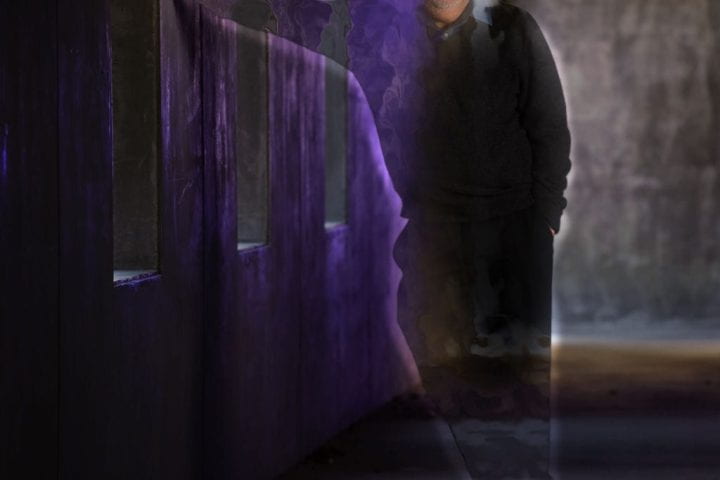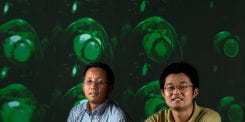Famed math professor who researches invisibility joins UCI
Famed math professor who recently joined UCI says breakthrough equations could make invisibility a possibility.

Imagine if Harry Potter’s cloak were real , or that you could blot out the sight of something as easily as pressing a mute button to eliminate sound. To some, this seems like “pi in the sky” – fantastic dreams shared by science fiction writers and mathematicians alike.
But UC Irvine’s newly arrived Excellence in Teaching Chair in Mathematics says breakthrough equations show that it can be done.
“Just as sound waves can be redirected, light waves could too,” said Gunther Uhlmann at a recent physical sciences breakfast lecture, demonstrating the teaching skills that have won him numerous awards. Using H.G. Wells’ The Invisible Man, the cartoon character Invisible Woman, dolphins, CT scans and even the occasional math theorem, he introduced himself and his work.
Much of Uhlmann’s research has focused on so-called inverse properties – using precise measurements of electromagnetic waves to reveal tumors in breast tissue, for instance, or oil deposits beneath the Earth’s surface. But he and other researchers are also hard at work trying to translate theorems into, well, nothing. Over the last few years, several scientific journals have published their findings on “transformation optics,” which Science called one of the top 10 insights of the past decade.
The essence of the “cloak of invisibility” goes something like this: When you dip a straw into a glass of drinking water, it appears to bend and break at the point it enters the water. The same is true in fishing, Uhlmann notes: While you may spy your potential catch underwater, you’re not actually seeing it where it is.
That’s because light rays are refracted by the glassy surface, which alters their electromagnetic fields, slowing them down and shifting their path. Engineers and physicists are attempting to create “metamaterials” that would turn light waves even more dramatically, curving them in a ring around an object and rendering it invisible Anyone looking at the rays, though, would still see them as straight lines appearing to go through thin air. Metamaterials don’t exist yet, Uhlmann says, but “there is intensive research being done.”
A native of Chile who earned a doctorate at the Massachusetts Institute of Technology, the math professor was recruited from the University of Washington, and UCI officials are thrilled that he is here.
“Uhlmann’s work on the development of new mathematical techniques has the potential to make seemingly impossible technology possible,” says Kenneth Janda, interim dean of physical sciences. “His work on invisibility is especially innovative. In the future, we may learn how to make light rays go around objects as if they had passed straight through them.”
Math department Chair Hongkai Zhao says: “We are delighted and proud that Professor Uhlmann is at UCI. He is recognized as the world leader in mathematical theory of inverse problems. He not only develops rigorous and beautiful mathematical theory but also cares about real applications.”
A past Sloan Fellow, Guggenheim Fellow and recipient of a UC Berkeley Chancellor’s Award for excellence in research and teaching, Uhlmann was awarded the Bocher Memorial Prize in January by the American Mathematical Society for outstanding published research, and he has been selected to deliver the annual AMS Einstein Public Lecture in Mathematics in March 2012.
Uhlmann says he’s happy to be at UCI, both because of its academic excellence and the Southern California sunshine. And he’s got theories about ocean waves and invisibility too. If the right metamaterials could be developed on a large enough scale, Uhlmann says, it might be possible down the road to redirect tsunamis around “invisible” continents. “Maybe your great-grandchidlren will see this application of Harry Potter’s cloak some day,”


